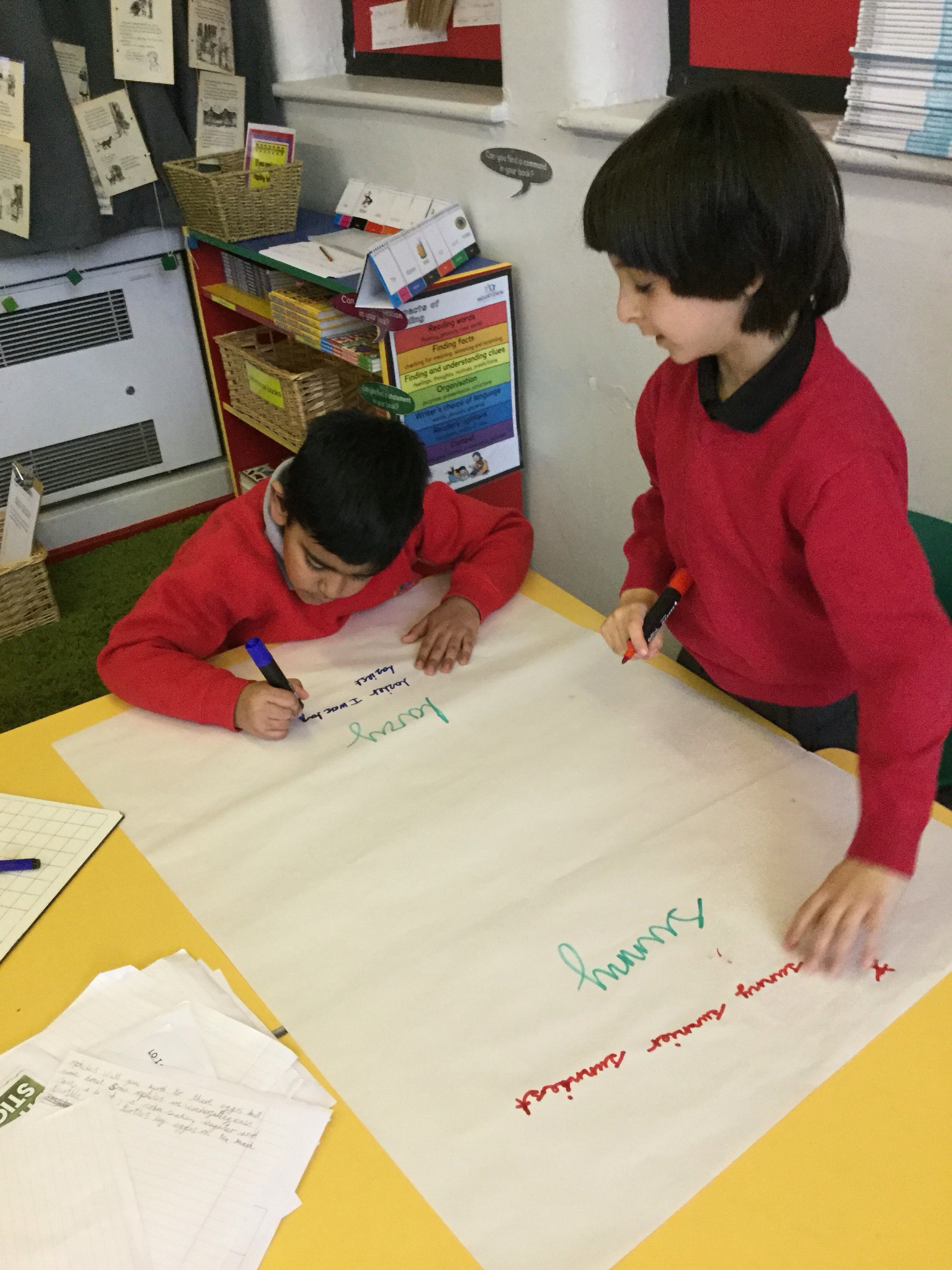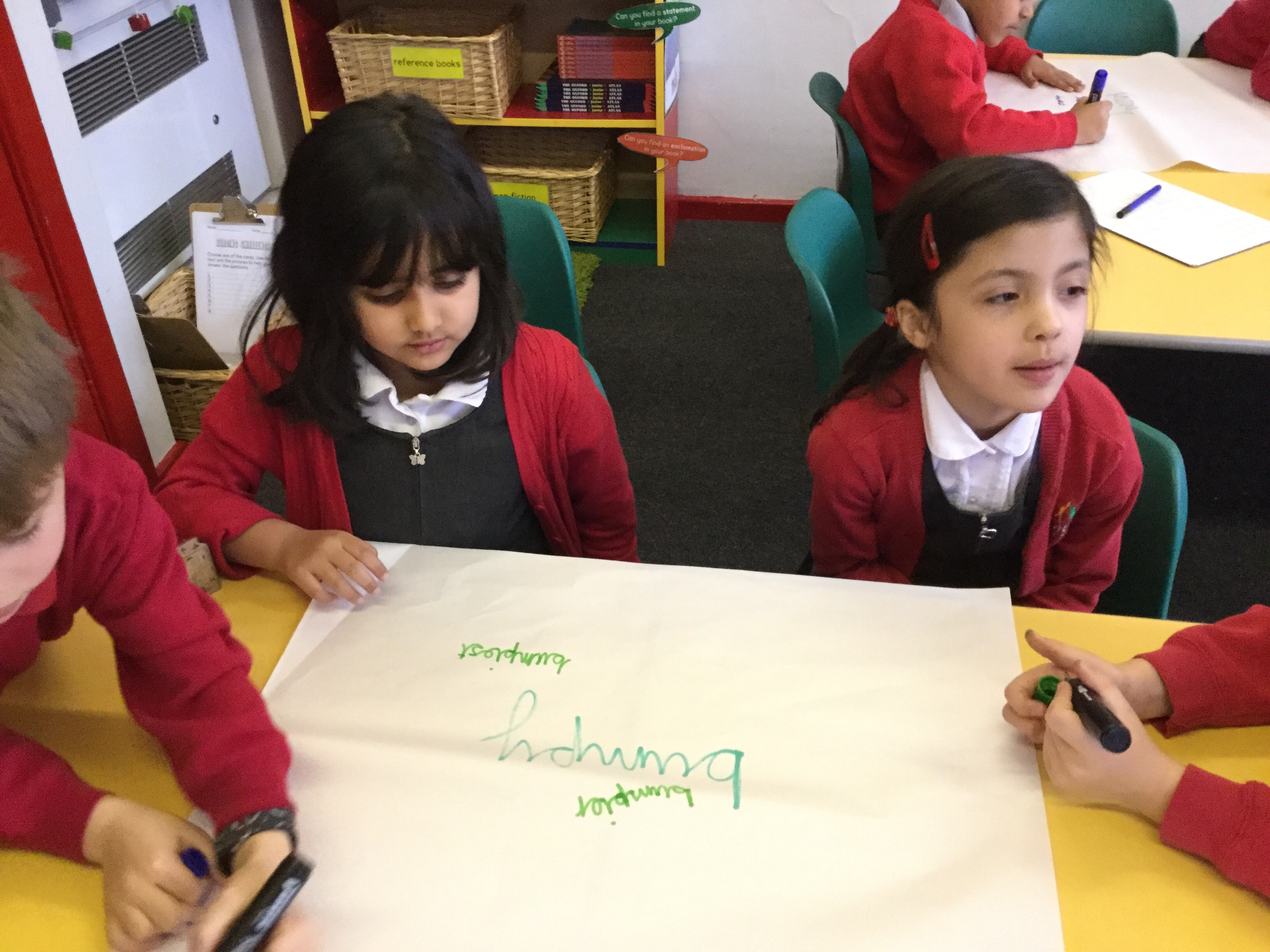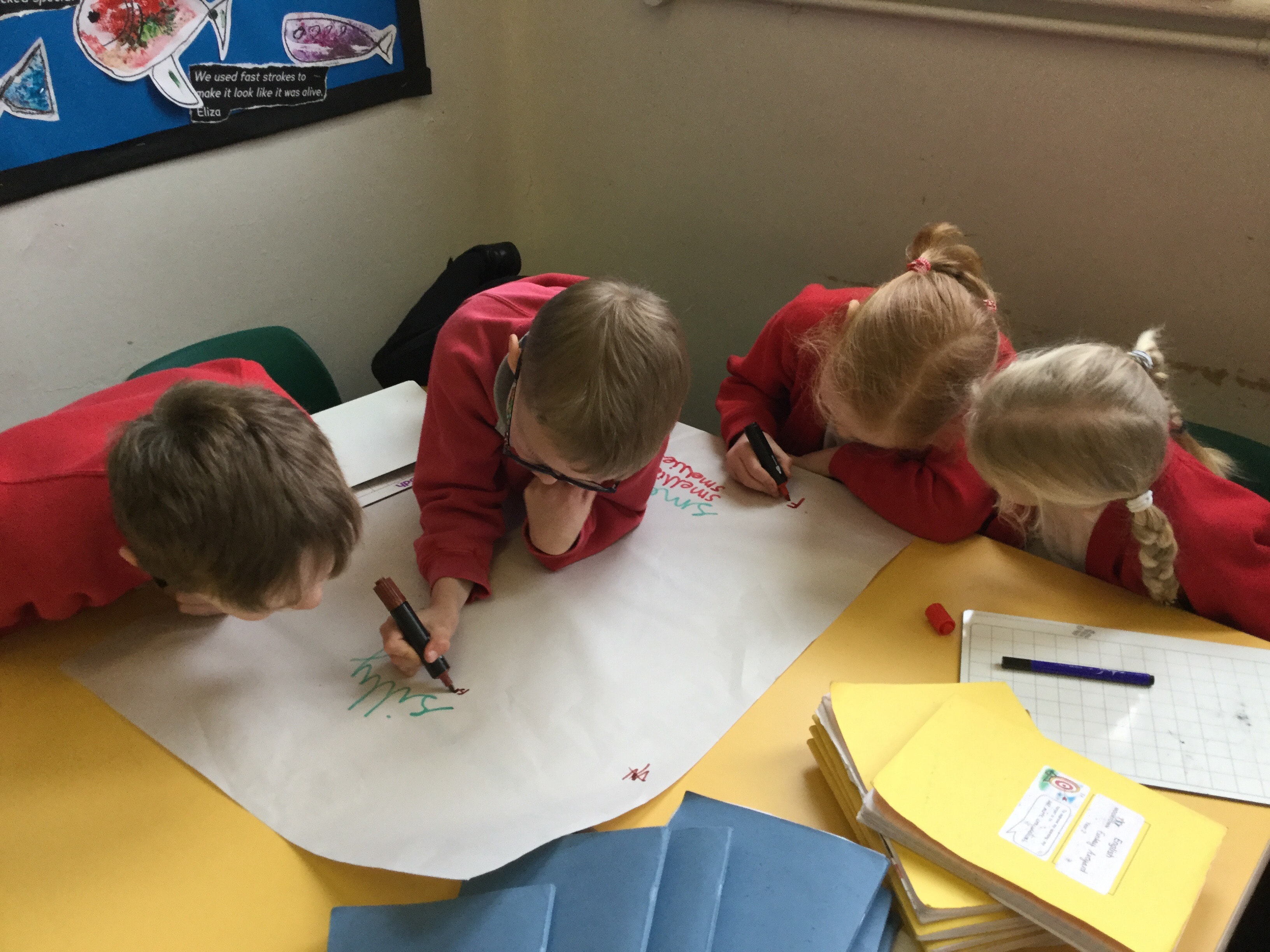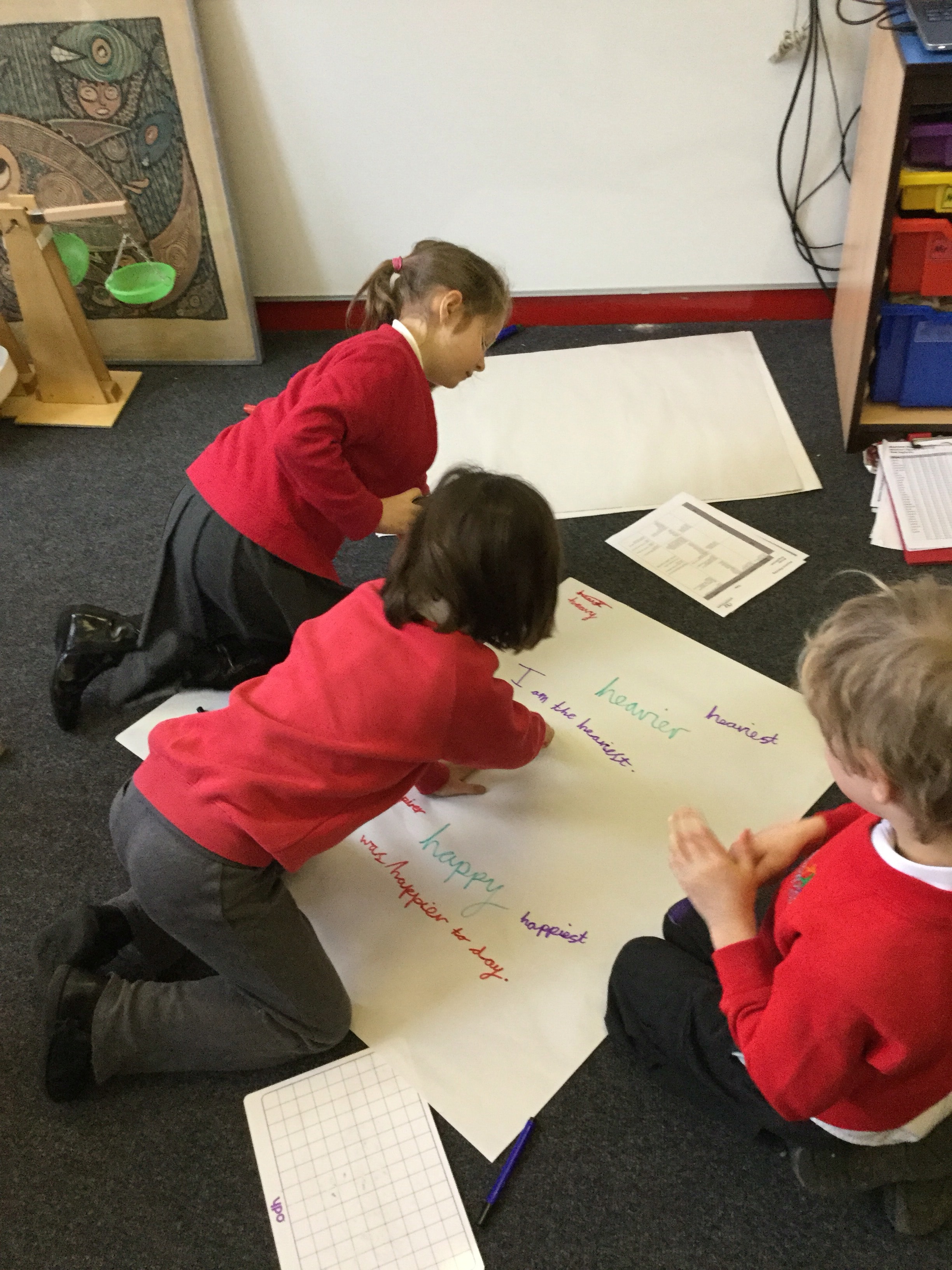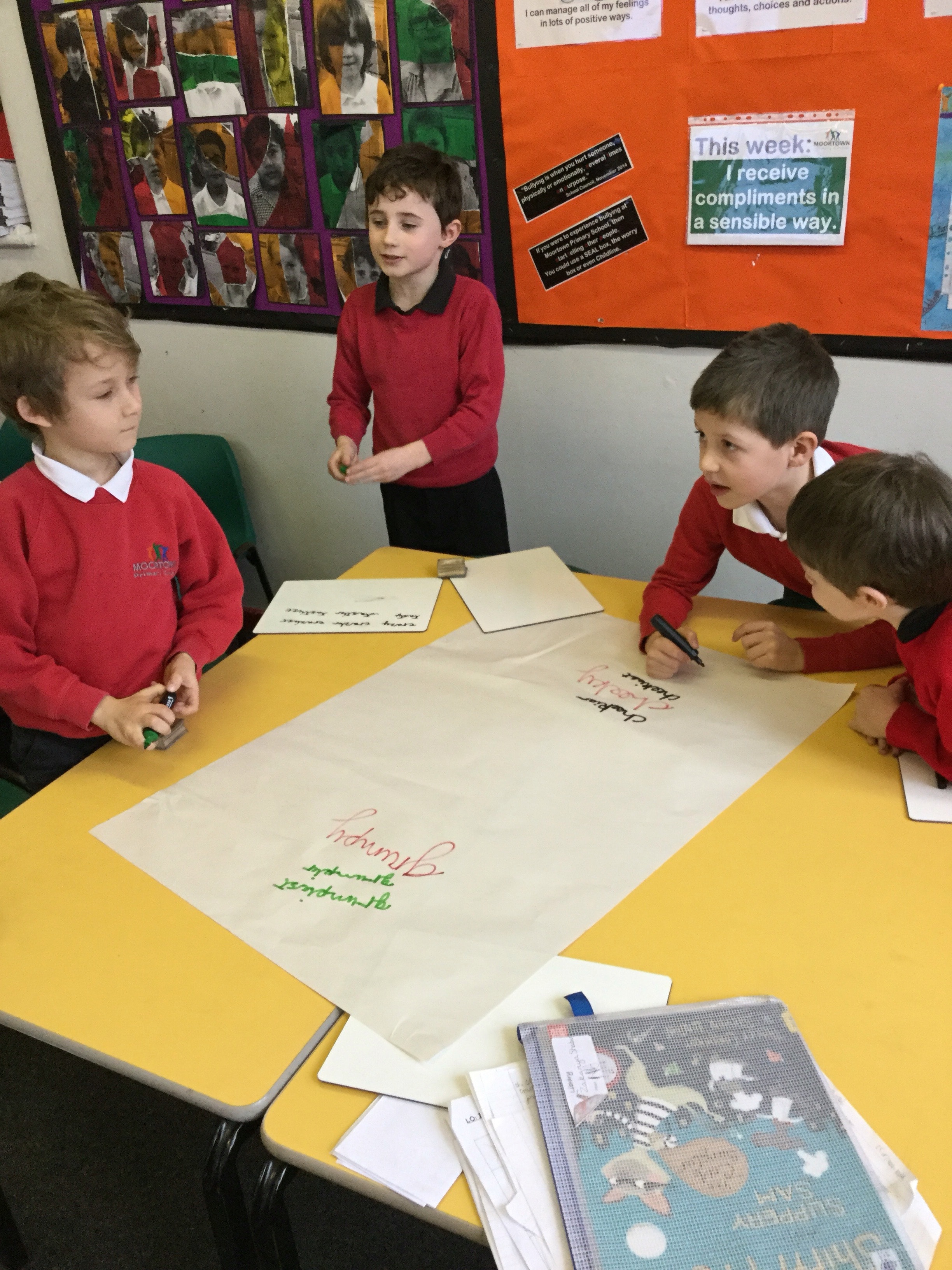Measuring lengths
We did lots of measuring lengths today! At the moment, we’re measuring using objects such as cubes, paper clips and straws. So we may say that the green strip of paper below is about 6 paper clips long. Standard units will be introduced in Year 2.
We took our shoes off, drew around our feet and measured how long they were too!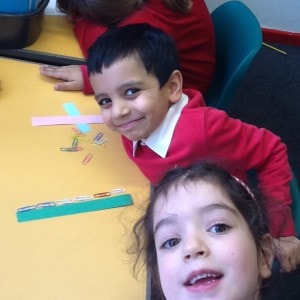
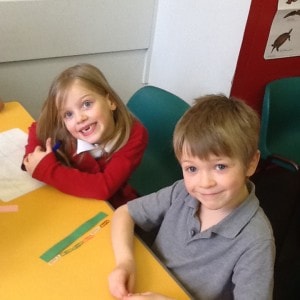
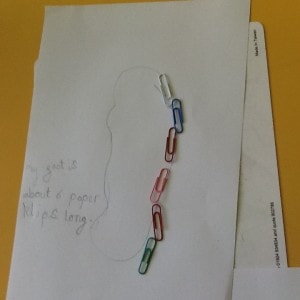
#shareaheart Safer Internet Day
We were discussing and writing about how we can make the internet safer and happier. We know what our personal information is and why we need to keep this private. We know what to do if we come across something we don’t like on the internet and we know how to treat others when interacting on the internet.
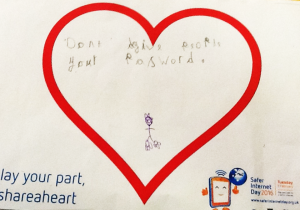
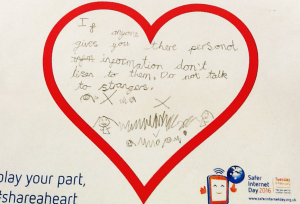
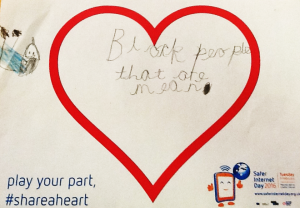
Is your child safe on-line?
Today has been Safer Internet Day and children across the country have been learning about how to stay safe online.
At Moortown Primary, we know how important staying safe is, and we know you’re always keen to promote ways to stay safe at home, too. Safe and responsible use of the internet is something which is growing and growing in importance – we hear so many shocking stories in the media – so please do take an active approach at home to promote your child’s online safety.
First of all, are you aware that social networking sites such as Instagram, Snapchat, Twitter and Facebook have a minimum age requirement of 13? (For some sites, it’s older.)
E-safety is a key part of our curriculum for both Computing and Personal, Social, Health and Citizenship Education (PSHCE). Read the age-related expectations for e-safety and digital literacy.
As teachers and parents, we’re aware of the ways in which the use of social media, online gaming and the internet have become part of young people’s lives. We embrace the educational and social benefits of these new technologies and encourage responsible internet use. We’re also increasingly aware of the potential dangers and opportunities for misuse these technologies offer. Key to promoting online safety is open and honest discussions about the sites we’re using and the ways we’re using them – keep the dialogue open with your children about their internet use.
The following list contains lots of ideas and resources to help you to promote online safety – tell us if you know any more good resources. These links are always on our website’s online safety page.
The UK Council for Child Internet Safety (UKCCIS) has published a short, really helpful guide for parents and carers whose children are using social media. The guide includes practical tips about the use of safety and privacy features on apps and platforms, as well as conversation prompts to help families begin talking about online safety. It also contains pointers to further advice and support.
A family agreement is a great way to start a conversation with your whole family about how you all use the internet and discuss together how to behave in a positive way when online at home, at school or at a friend’s house. To support parents in creating a family agreement, Childnet International have put together some free advice and a family agreement template.
The Anti-Bullying Alliance has joined forces with internet security company McAfee to produce a series of videos on the topic, looking at how and why cyberbullying occurs; advice for children and young people to protect themselves and tips to pass on to parents about steps they can take at home.
This video from Common Sense Media gives students five basic rules for engaging with social media, including switching on privacy settings and turning off location tracking features that harvest data (parents might be interested to watch this Guardian video which explores this in more detail).
Common Sense has also created videos explaining how the most popular apps and sites work, so if you have ever found yourself wondering what Snapchat, Vine and Instagram are, these are a good place to start your education.
For younger children (Reception, Year 1 and Year 2), there are a number of picture books available online (and in print), including the tale of Digiduck, who shares a nasty picture of a friend, and Smartie the penguin, who runs into trouble with his new computer.
The ever-brilliant Horrible Histories tackles similar themes in a sidelong way, with Lady Jane Grey clicking a dodgy link and getting spammed; a prudish Victorian lying about his age and stumbling across scandalous content (ladies without gloves); and Guy Fawkes learning a valuable lesson about privacy settings as his plot fizzles out.
Other resources are:
- www.childnet.com/parents-and-carers This site provides a whole host of useful ways to keep your child safe, with useful pages of advice, key advice, hot topics and tips for discussing online safety.
- www.internetmatters.org Lots of useful advice for parents on a range of issues including cyber bullying, online reputations and online grooming. There is also a link to a useful ‘guide for parents’.
- www.parentinfo.org Useful articles on a range of current e-safety issues and new apps and websites including Minecraft, Snapchat and ooVoo. New articles are added regularly.
- www.ceop.police.uk The official site of the National Crime Agency’s CEOP (formerly the Child Exploitation and Online Protection Centre), containing advice and useful information and a link for reporting online abuse, exploitation or inappropriate images.
- http://www.saferinternet.org More links and advice for parents and children including resources linked to Safer Internet Day.
- www.nspcc.org.uk NSPCCs own website with lots of safety advice including video to watch with your children and a link to their work with O2.
- www.mumsnet.com Lots of e-safety advice including a section specifically for pre-school and primary.
School Council Elections
Following in-class election speeches this week, our School Council elections will take place on Thursday, 11 February. All children have the opportunity to vote at our polling station using the following instructions.
Before voting, please read the following:
- Vote once for one person.
- Place one X only on this ballot paper beside the name of the candidate you have chosen.
- Do not write or mark anything else on the ballot paper; if you do, your paper will be invalid and your vote will not be counted.
- When you have marked the ballot paper, fold the paper and place it in the box provided.

Results will be counted on Thursday and our new School Council will be announced at the end of the day. This will be made up of two children from each class with the highest number of votes.
Good luck to all our candidates.
Phonics fun
We’ve been learning about comparatives and superlatives in phonics this morning. We’ve also been learning about one of our key spelling rules: drop the y for an i.
Reading with Reception
Every Friday afternoon since Christmas, Reception have visited us so that we can read to them. They choose a book from their classroom and then enjoy us reading it to them before discussing it together. We enjoy it just as much as they do and have actually started teaching them how to read some easier words, too – it’s been quite challenging remembering our phonics from all those years ago.
A visit from the chicks
We thoroughly enjoyed meeting the chicks on Friday as they ventured into Y5 for a visit. We discussed what sort of animal they were and therefore what we knew about them but mostly we just enjoyed holding them and listening to their cheeping.
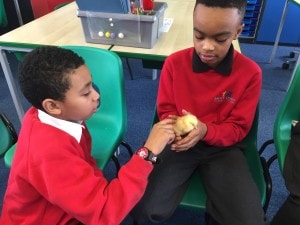
Learn more about the new tests for your child
You’ll be aware that there have been lots of changes in education in the last few years, including a new curriculum with greater expectations and assessment without levels.
There are also new end of key stage tests (commonly called the SATs) coming up in May. Children in Year 2 (end of KS1) and Year 6 (end of KS2) will be the first to sit these new tests.
Find out more about the Key Stage 1 tests: watch this short video and/or read this booklet.
Find out more about the Key Stage 2 test: watch this short video and/or read this booklet.
05 February 2016
This week’s homework is creative and is due Wednesday 10 February:
I can show what I know about fractions.
Who says that maths can’t be creative? This homework gives your child the opportunity to showcase their learning of fractions creatively. There are loads of ways of showing off a knowledge of fractions, such as:
- a Little Miss or Mr Man fraction story in the style of Roger Hargreaves
- a picture where all the elements are a fraction
- a poem about fractions
- designing a classroom with all the parts indicated by a fraction
Enjoy getting creative with maths!
05 February 2016
The week’s spellings are all singular and plural possessives. We’ve been looking at the role of apostrophes in the contracted form (can’t…don’t…won’t) and are now focussing on how they are used to mark possession (the cat’s pyjamas are the pyjamas that belong to the cat).
For this spelling task we’re focussing on using ‘s for singular nouns (one cat’s pyjamas) and s’ for plural nouns (two cats’ pyjamas).
Your child needs to find five interesting nouns that link to our Life topic. A noun’s job is to name things, people or places. Once they have chosen five spellings, they must work out the singular and plural possessives for their nouns. Usually, adding an -s to the end of a noun will make it plural and all that is required is an apostrophe after that s to mark possession. However, some nouns have irregular plurals which must be learnt. For example, if a noun ends in a y you have to drop the y for an i and add es (like ‘ladies’ from last week’s list). Additionally, some nouns have even more unusual spelling rules for the plural (one sheep, two sheep; one cactus, two cacti). The best way to check this is to go onto the internet and search for your nouns plural e.g. cactus plural, sheep plural.
